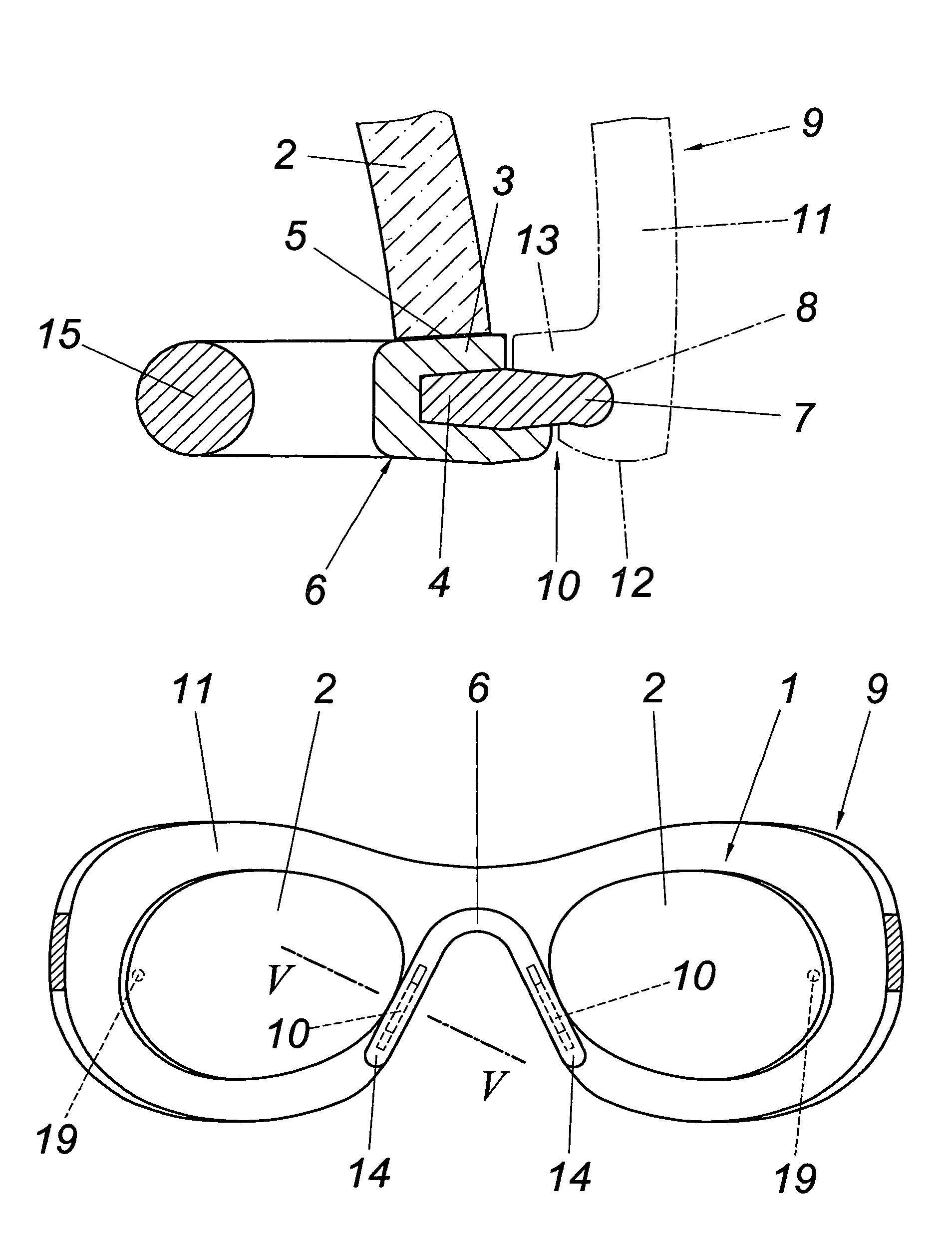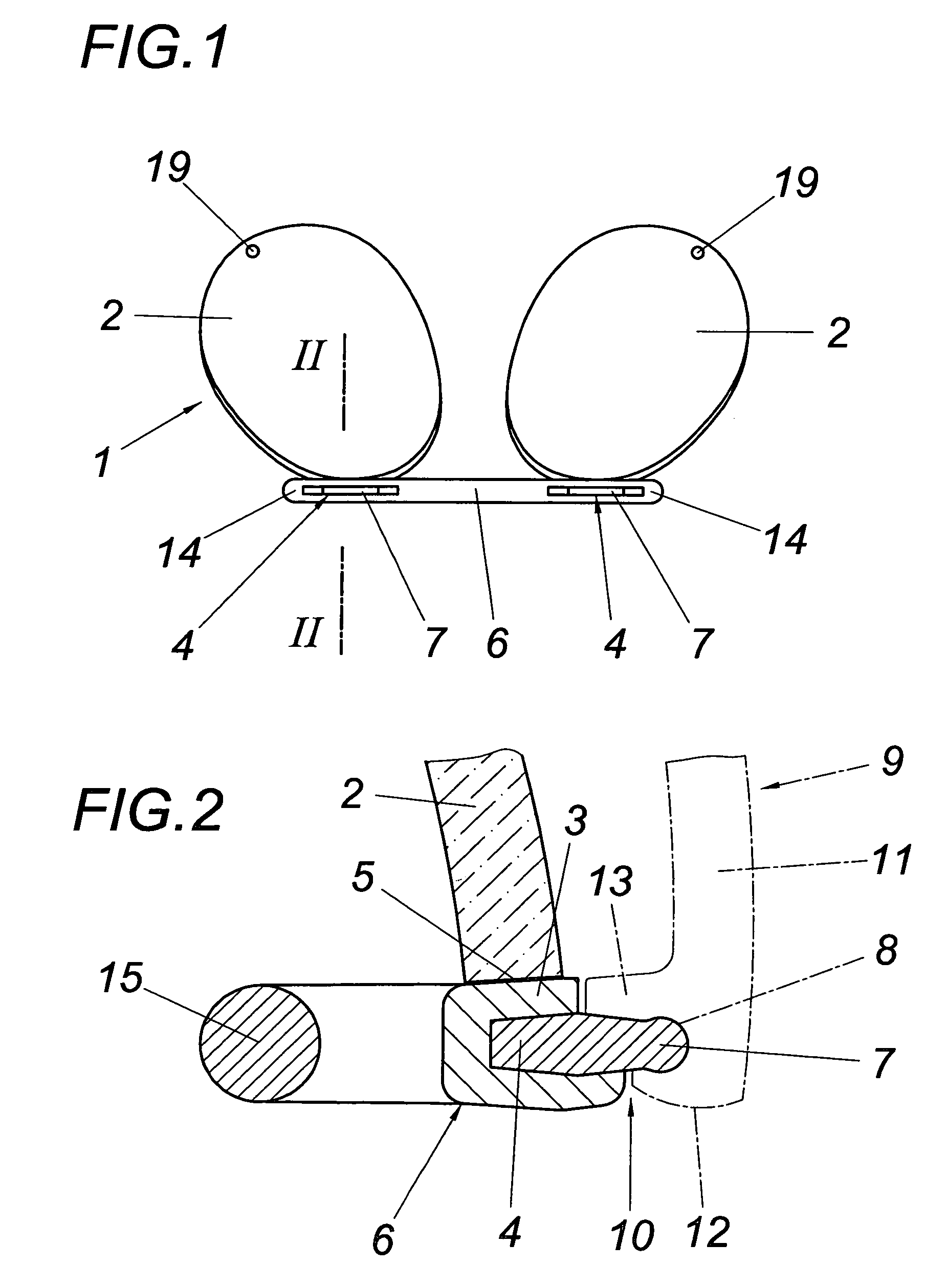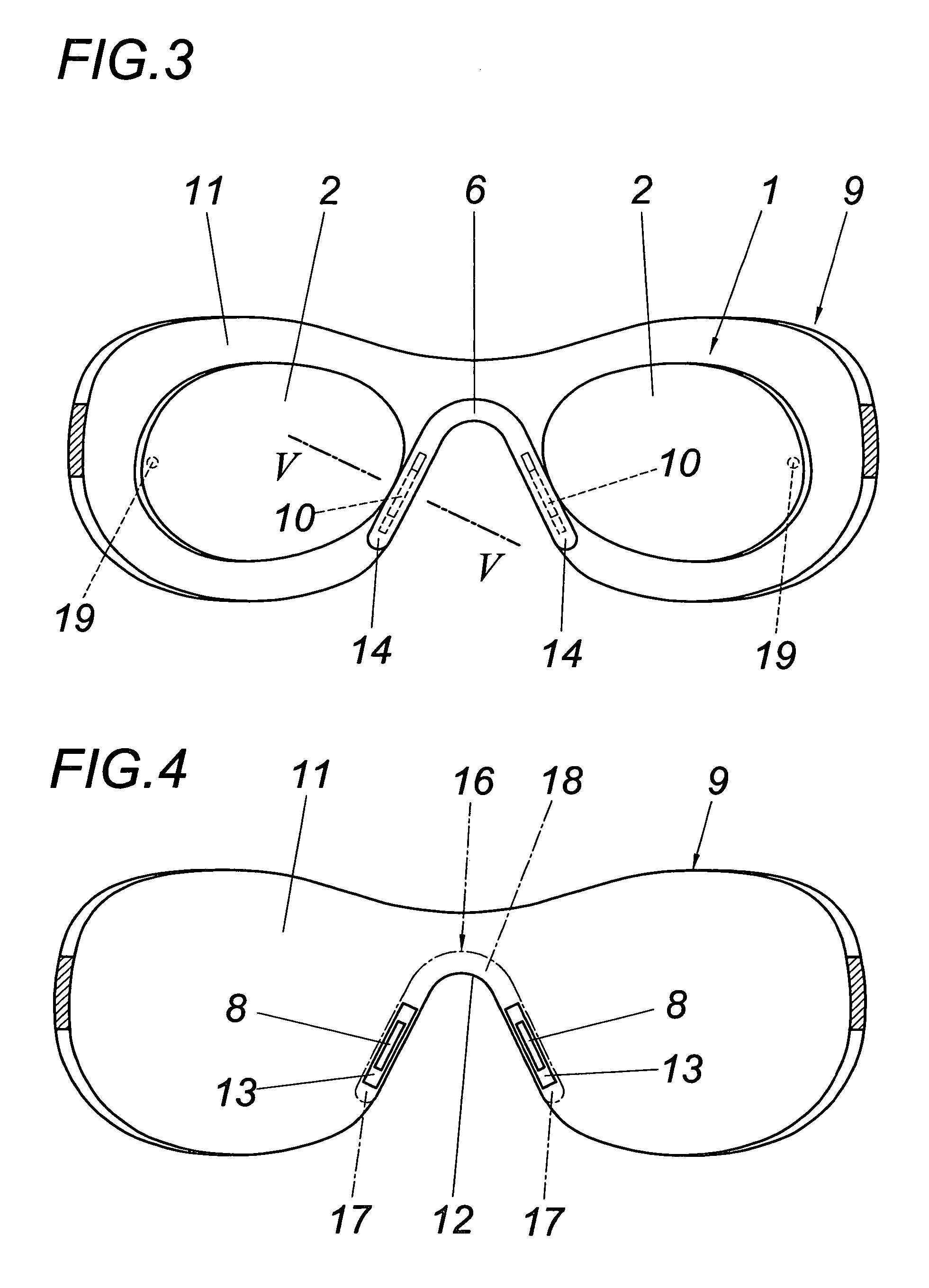Mount for two frameless spectacle lenses
- Summary
- Abstract
- Description
- Claims
- Application Information
AI Technical Summary
Benefits of technology
Problems solved by technology
Method used
Image
Examples
Embodiment Construction
[0021]The lens insert 1 consists according to FIGS. 1 and 2 of two optical lenses 2 which are fastened to supporting parts 4 which are provided with a flexurally soft support 3, this being through an adhesive layer 5 between the support 3, which support is made of plastic and is preferably injected onto the supporting parts 4, and a circumferential section of the face side of the lenses 2, as is shown in particular in FIG. 2. The supports 3 of the supporting parts 4 are mutually integrally connected to form a flexurally soft nose-piece 6 having a straight progress. The substantially flexurally rigid supporting parts 4 form bridge-shaped coupling parts 7 which latch into oblong-shaped latching recesses 8 of spectacles 9 and produce with the same a plug-in coupling 10 for fastening the optical lens insert.
[0022]FIG. 4 shows such spectacles 9 in closer detail. It comprises an integral sunshield 11 which is used for protection against the sun and is provided with a nose recess 12. Along...
PUM
 Login to View More
Login to View More Abstract
Description
Claims
Application Information
 Login to View More
Login to View More - R&D
- Intellectual Property
- Life Sciences
- Materials
- Tech Scout
- Unparalleled Data Quality
- Higher Quality Content
- 60% Fewer Hallucinations
Browse by: Latest US Patents, China's latest patents, Technical Efficacy Thesaurus, Application Domain, Technology Topic, Popular Technical Reports.
© 2025 PatSnap. All rights reserved.Legal|Privacy policy|Modern Slavery Act Transparency Statement|Sitemap|About US| Contact US: help@patsnap.com



